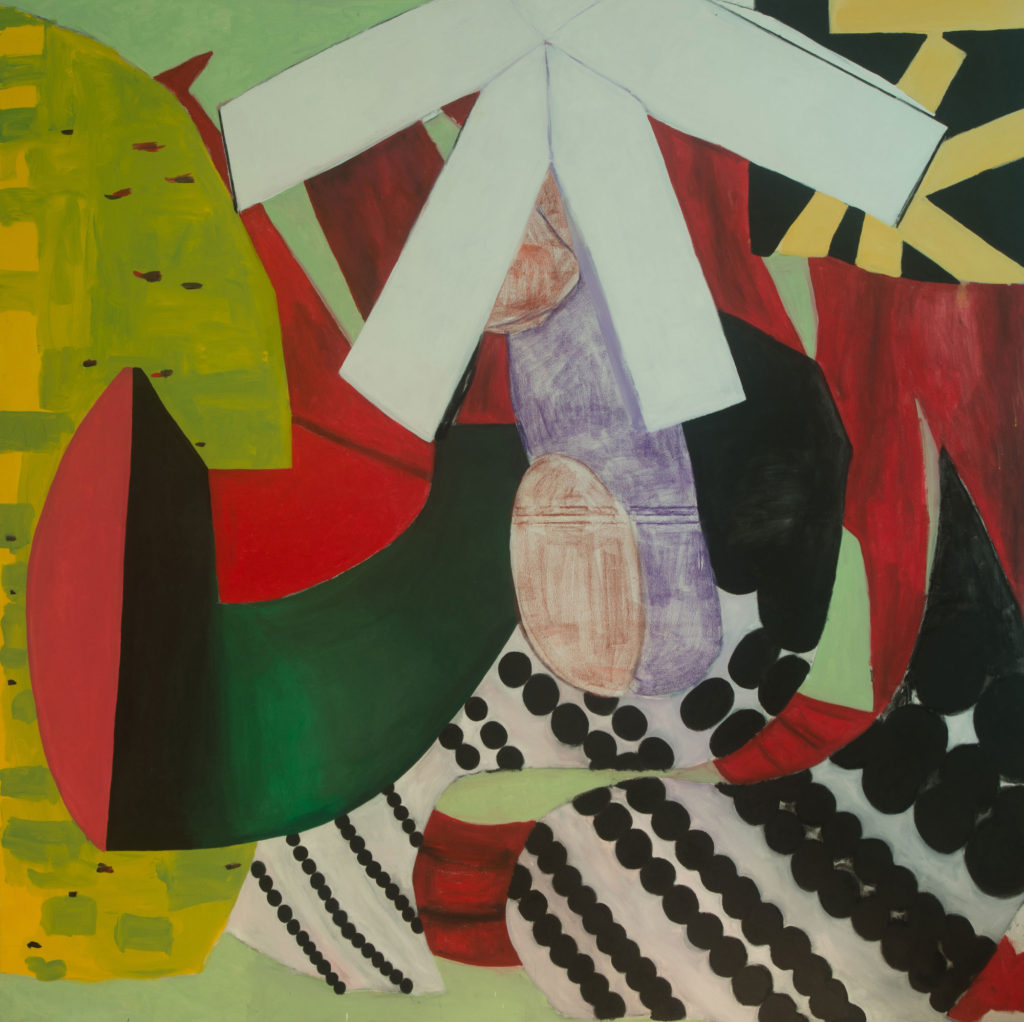On June 4, the Boulder Museum of Contemporary Art inaugurated Roberto Juarez Processing: Paintings and Prints 2008 – 2018. The exhibition filled the entire space of the museum with studies, prints, and paintings from this late period of the long and productive career of Roberto Juarez (NA 2011). Curated by Edward J. Sullivan, the selected works were carefully chosen with the artist to illustrate the process by which he moves from an idea or concept to a finished work. The show somewhat literally provides a view into the artist’s head, revealing as much about the method of his thinking as it does the procedure that results in a finished work.
Coupled with the catalog, which includes an essay by Sullivan, an interview with Juarez, as well as statements by friends and colleagues, the experience of this exhibition leads the close observer to a better understanding of the creative practice that defines the life of an artist. The major works of this period, the Pater paintings, were produced over a number of years during which Juarez was dealing with the death of his father.


Born of an urge to work, the time spent alone in his studio reading, drawing, painting, and looking at other artists’ work allowed his mind to grasp the idea of loss. While these works are not specifically memorials to his father, the process of creating them led the artist to a more profound understanding of his place in life in the absence of his father, Roberto Juarez, Sr. The works in this show are the physical representations of the vector to this comprehension.
In a recent conversation with the artist, he expressed great enthusiasm for an exhibition of Edo Period painting at the Metropolitan Museum of Art. I subsequently went to see the show, The Poetry of Nature. I immediately understood his enthusiasm. The spare, sometimes enormous paintings are defined as much by what they depict as by the ingeniously choreographed empty space surrounding the primary elements of each work. In these recent Pater paintings, as in his large murals, Roberto Juarez, with the assured confidence of a mature and accomplished artist, organizes his visual thoughts with the skill of an Edo calligrapher. That skill is an exciting thing for a viewer to realize, and a thrilling thing for an exhibition to capture.

Roberto Juarez Processing: Paintings and Prints 2008 – 2018 was presented at the Boulder Museum of Contemporary Art from June 7 – September 16, 2018.
Clayton Kirking, former Chief of Art Information Resources for the New York Public Library, is an independent writer and curator. His areas of interests include Latin American/Latinx art, Mexican cuisines, and culinary history.

